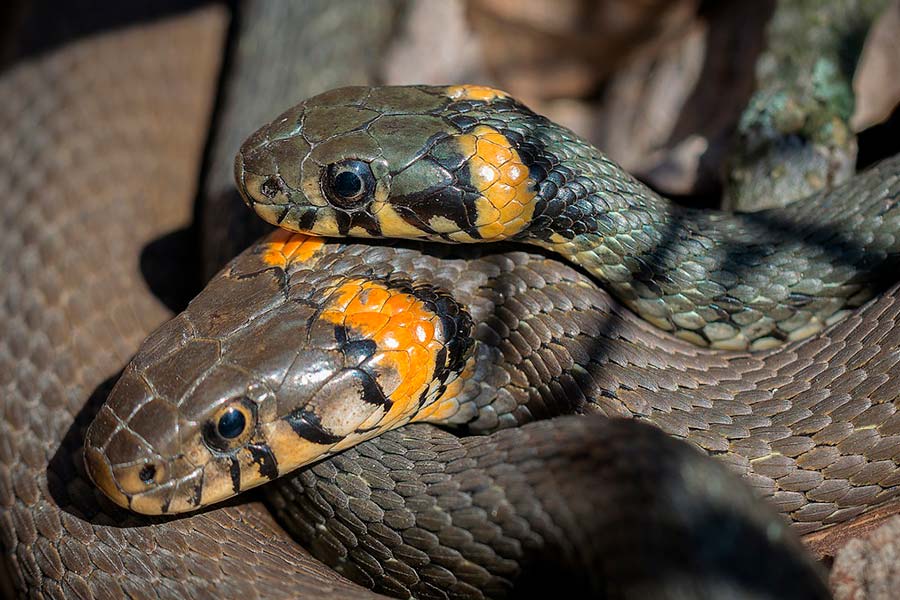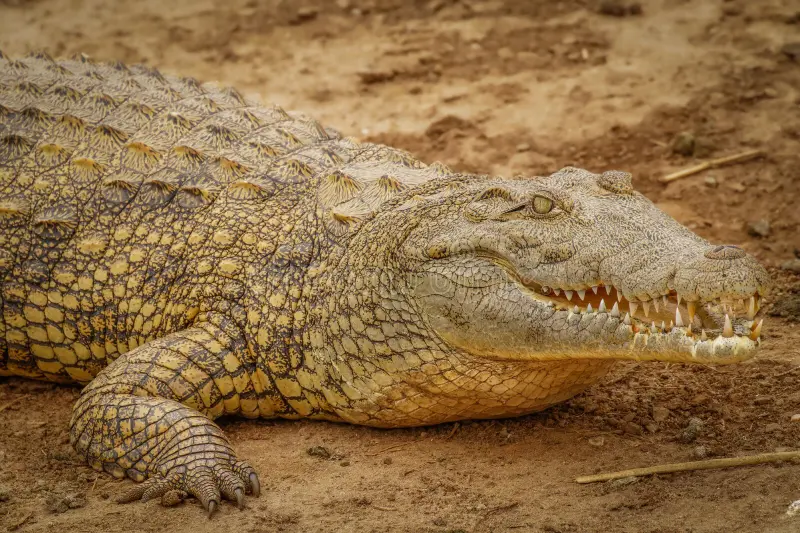Reptiles of Uganda: A Diverse and Enigmatic World – Among Uganda’s diverse fauna, reptiles play a vital role in shaping the ecosystem and capturing the imagination of both researchers and wildlife enthusiasts. This essay explores the world of reptiles in Uganda, highlighting their diversity, ecological significance, and the need for their conservation.
Diversity of Reptiles
Uganda’s varied topography, which includes savannas, rainforests, wetlands, and mountains, provides a diverse range of habitats that support an impressive array of reptile species. Over 170 reptile species have been recorded in Uganda, and it is likely that more remain to be discovered. These reptiles belong to several families, including snakes, lizards, turtles, and crocodiles.
Snakes of Uganda
Uganda is home to a remarkable diversity of snake species, ranging from harmless colubrids to highly venomous vipers and cobras. Among the most iconic snake species in Uganda is the African Rock Python (Python sebae), one of the largest snake species in the world. These formidable constrictors inhabit a wide range of habitats, from forests to grasslands.
The Gaboon Viper (Bitis gabonica) is another noteworthy snake found in Uganda. Known for its cryptic coloration and large fangs, it is one of the most venomous snakes on the continent. Fortunately, it is not often encountered by humans due to its secretive nature.
Uganda is also home to several species of cobras, including the Forest Cobra (Naja melanoleuca) and the Egyptian Cobra (Naja haje). While these snakes are venomous, they play crucial roles in controlling rodent populations, contributing to ecosystem balance.
Lizards of Uganda
Lizards, with their diverse body shapes and behaviors, are abundant in Uganda. One of the most iconic lizard species is the Nile Monitor Lizard (Varanus niloticus), known for its impressive size and adaptability. These reptiles are often found near water bodies and are known for their excellent swimming abilities.
Another notable lizard species in Uganda is the African Chameleon (Chamaeleo africanus). These masterful camouflage artists are found in various habitats, from forests to gardens. Their unique features, such as independently moving eyes and prehensile tails, make them captivating subjects for study.
Turtles and Tortoises
Uganda hosts several species of turtles and tortoises, with the Pancake Tortoise (Malacochersus tornieri) being one of the most distinct. Recognizable by their flattened shells, these tortoises are adapted for a rock-dwelling lifestyle, making them well-suited to the country’s rocky terrain.
The African Helmeted Turtle (Pelomedusa subrufa) is another common reptile found in Uganda. They are often seen in slow-moving water bodies, where they feed on aquatic vegetation and small invertebrates.
Crocodiles of Uganda
Uganda’s numerous lakes, rivers, and wetlands provide ideal habitats for crocodiles. Two species are prominent in the country: the Nile Crocodile (Crocodylus niloticus) and the African Dwarf Crocodile (Osteolaemus tetraspis).
The Nile Crocodile, one of Africa’s largest predators, can be found in various aquatic environments across Uganda. They are known for their ambush hunting tactics and are a top predator in the freshwater ecosystems.
The African Dwarf Crocodile, on the other hand, is a smaller and more secretive species, typically inhabiting forested swamps and slow-moving water bodies. Due to its elusive nature, it is less frequently encountered.
Ecological Significance
Reptiles in Uganda play crucial roles in maintaining ecological balance and functioning within their respective habitats. Snakes help control rodent populations, reducing the risk of crop damage and disease transmission. Lizards contribute to insect control and plant pollination, while turtles and tortoises help shape plant communities by dispersing seeds. Crocodiles, as apex predators, regulate the populations of prey species, preventing overgrazing and promoting ecosystem health.
Conservation Challenges
Despite their ecological importance, reptiles in Uganda face numerous threats that require urgent attention. Habitat destruction, driven by agriculture, logging, and infrastructure development, is a primary concern. Deforestation, in particular, reduces available habitat for many species, leading to population declines.
Illegal wildlife trade poses another significant threat. Certain reptile species are sought after for their skins, which are used in the fashion industry, and for the pet trade. Unregulated collection can deplete populations and drive species towards extinction.
Additionally, the spread of invasive species and climate change are emerging challenges. Invasive species can compete with native reptiles for resources and introduce diseases, while climate change can alter habitats and disrupt breeding patterns.
Conservation Efforts
Efforts to protect Uganda’s reptiles and their habitats are underway. The Uganda Wildlife Authority (UWA) is responsible for the management and conservation of wildlife within the country’s protected areas. UWA conducts research, enforces wildlife laws, and collaborates with local communities to promote conservation.
International organizations and NGOs also play a vital role in reptile conservation in Uganda. They work on various initiatives, including habitat restoration, anti-poaching efforts, and public education to raise awareness about the importance of reptiles in ecosystems.
Uganda’s reptiles, with their remarkable diver
Conclusion
Uganda’s reptiles, with their remarkable diversity and ecological significance, are an integral part of the country’s natural heritage. As we continue to discover and understand these enigmatic creatures, it becomes increasingly important to address the threats they face and promote their conservation. Through concerted efforts from government agencies, conservation organizations, and local communities, Uganda can continue to be a sanctuary for its diverse reptilian inhabitants, preserving its status as the “Pearl of Africa” for generations to come.




Comment (0)